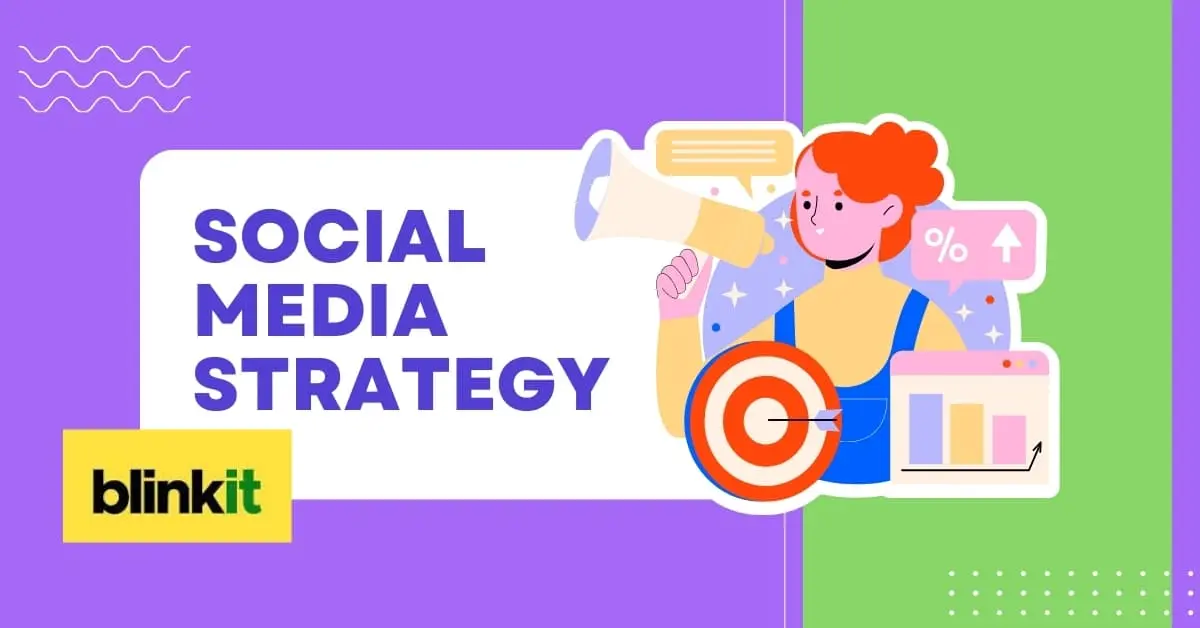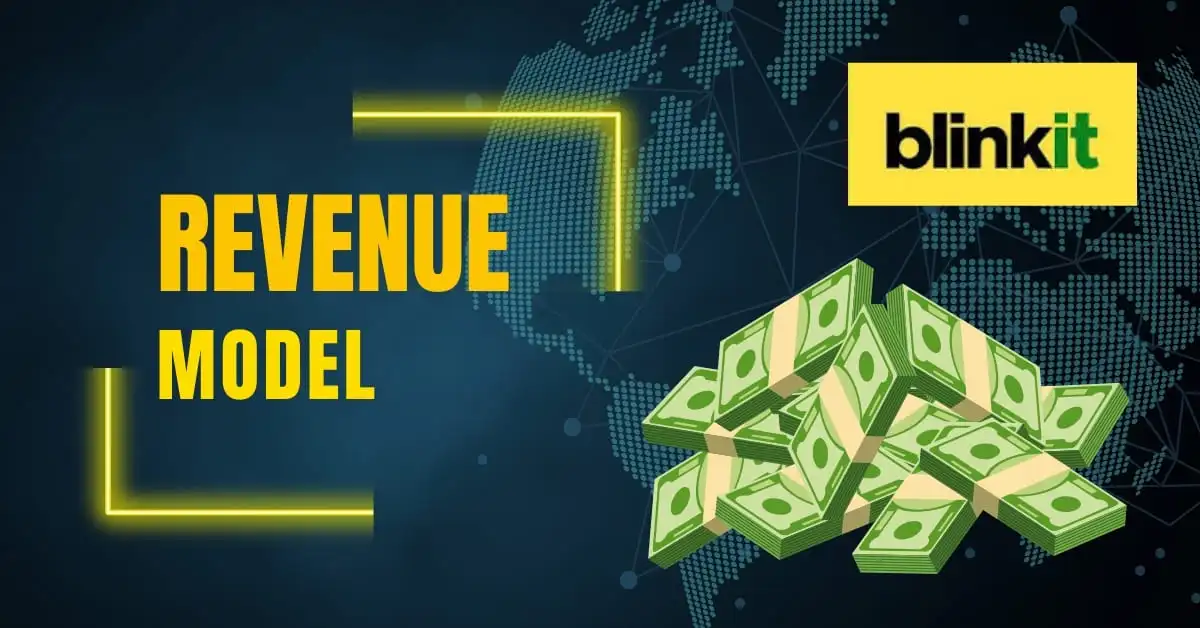
Blinkit Business Model: A Fast-Paced Journey into the Future of Grocery Delivery
Imagine this; you’re resting on your couch, scrolling through your phone, and suddenly realize you have run out of snacks right before your favorite show. Panic sets in, but fear not. Blinkit is here to save your evening. This app promises to deliver your grocery essentials in a blink.
But how did this startup go from a spark of an idea to a grocery king? Let’s explore the Blinkit business model and discover the magic behind its success.
In a country where comfort is a priority, Blinkit has become a popular name for speedy grocery delivery. As more Indians demand digital convenience, the story of the Blinkit business model is not just fascinating; it’s also a reflection of changing consumer habits and preferences. With over 10 million users on the Play Store, it’s clear that Blinkit is a game-changer in the grocery delivery landscape.
What is Blinkit? From Thought to Execution

Blinkit, initially known as Grofers, was founded in 2013 by Albinder Dhindsa and Saurabh Kumar. The founders saw a vision of a platform that would simplify grocery shopping, allowing users to order their essentials online and receive them in record time. Imagine a scenario where you can shop for groceries without stepping out of your house—sounds like a dream, right? The duo realized that there was a significant gap in the market for quick and efficient grocery delivery, especially in urban areas, and this was the foundation of the Blinkit business model.
Evolution and Rebranding
In 2021, Grofers rebranded itself to Blinkit, highlighting its mission of ultra-fast delivery. The shift wasn’t just a change of name; it was a bold statement that they meant business—literally business, and from here starts the Blinkit marketing strategy. Blinkit took the concept of convenience to another level, aiming for deliveries within 10 minutes. Now this is what we call “fast food.” This rebranding also aligned with their new focus on fastest delivery and customer satisfaction, effectively positioning themselves in the competitive market.
The need for speed became a necessity during the pandemic when people were forced to stay home. Blinkit capitalized on this trend, ensuring that customers could receive their groceries without any hassle. With this change in branding, Blinkit took off on an ambitious journey to redefine grocery shopping in India.
Market Research and Development
Before launching Blinkit, extensive market research was conducted. The founders surveyed consumers, discovering that time and convenience were the top priorities for urban shoppers. This insight led to the creation of a platform designed to meet the needs of busy professionals, students, and families. With urban lifestyles becoming increasingly fast-paced, Blinkit positioned itself as the go-to solution for grocery needs.
Tired of not getting a JOB?
Diploma Course in Digital Marketing
With 100% Job Guarantee
Learn effective marketing strategies & maximize your income.
Working Hands: The Backbone of Blinkit business model
1. The Franchise Model
Blinkit employs a franchise model, partnering with local businesses to stock their products. This Blinkit marketing strategy not only empowers small retailers but also ensures that it has a broad variety of products on hand. It supports local businesses while enjoying the convenience of online shopping. Currently, Blinkit collaborates with over 2,500 local stores across major cities, creating a strong network that benefits both franchise owners and consumers.
Blinkit involves local stores and taps into existing distribution channels, allowing for quick inventory turnover and reducing waste. Local store owners who adopt this concept become partners rather than rivals, creating a feeling of community and resulting in a win-win scenario for all parties.
2. Dealers and Suppliers
The Blinkit marketing strategy works closely with dealers and suppliers to source products. By establishing strong relationships with these stakeholders, Blinkit guarantees that it can offer fresh and quality items to its customers. They maintain strict quality checks, ensuring that every item meets their standards. After all, nobody wants to bite into dried-out bread.
3. Delivery Partners
And let’s not forget about the unsung heroes—delivery partners. Blinkit employs a fleet of delivery partners who zoom around cities, ensuring your snacks and groceries arrive just in time. With their help, the Blinkit business model can show off having a network that operates like clockwork, fulfilling orders faster than you can say, “Where’s my vegetables?” They have over 20,000 delivery partners working in multiple cities, making Blinkit one of the most efficient delivery services in India.
4. Technology Infrastructure
Behind the scenes, Blinkit invests heavily in technology for smooth operations. Their app is designed to provide a user-friendly experience, with features like real-time tracking, user reviews, and smart recommendations based on previous shopping. This tech-savvy method not only magnifies customer satisfaction but also improves delivery efficiency.
Blinkit Marketing Strategy: How They Stand Out
1. Online Marketing Tactics
When it comes to the Blinkit marketing strategy, digital marketing plays a central role. To attract new clients, they make use of influencer partnerships, social media channels, and targeted advertisements. Ever seen an eye-catching Instagram story featuring a delicious chocolate cake, followed by a “Get it delivered in 10 minutes” caption? That’s Blinkit’s way of engaging with consumers. Their marketing campaigns often feature local celebrities, making their brand relatable and trendy.
2. Offline Marketing Efforts
But they don’t stop at online marketing. Blinkit also uses billboard strategies like outdoor advertising and partnerships with local stores. You might have seen their colorful ads while stuck in traffic or on billboards near your neighborhood. Their clever use of catchy slogans and vibrant imagery makes them stand out, ensuring they leave a lasting impression.
3. Customer Engagement
Customer engagement is an essential part of the Blinkit marketing strategy. Blinkit believes in engaging with its audience through contests, discounts, and loyalty programs. They know that a happy customer is a loyal customer. So, whether it’s through a catchy jingle or a fun Instagram challenge, they keep their brand fresh in the minds of consumers. Their referral programs incentivize existing customers to bring in new users, which has contributed to their growth.
4. Seasonal Promotions and Campaigns
Blinkit also capitalizes on festive times and special occasions to run targeted marketing campaigns. For example, during Diwali, they offer exclusive discounts on sweets and snacks, like a promotion for celebration. These promotions are carefully timed, tapping into the emotions of consumers while driving sales. By aligning its marketing strategies with festivals and national events, Blinkit effectively connects with its target audience.
Blinkit Marketing Strategy in Social Media

1. Instagram: Eye-Catching Food Visuals
Blinkit uses stunning food imagery and quick recipe reels to engage users, often collaborating with influencers to enhance brand visibility.
2. Facebook: Community Building
They create vibrant groups for recipe sharing and host fun contests, engaging customers and fostering a sense of community.
3. Twitter: Real-Time Engagement
With timely updates and trend-driven posts, Blinkit keeps customers informed and entertained, responding promptly to feedback.
4. YouTube: Cooking Tutorials
Blinkit shares easy-to-follow cooking tutorials and behind-the-scenes content, making grocery shopping fun and educational.
5. LinkedIn: Professional Insight
Blinkit shares industry trends and growth news, attracting talent and showcasing its innovative approach in the grocery sector.
6. Pinterest: Recipe Inspiration
With visually appealing recipe boards and seasonal themes, Blinkit inspires customers to cook using their products.
Key Partners of Blinkit: A Collaborative Ecosystem
1. Local Stores
Blinkit’s found success in its collaboration with local grocery stores. These partnerships allow them to stock products quickly and efficiently, reducing delivery times and increasing the Blinkit revenue model. By collaborating with these stores, Blinkit can offer a wide range of products while supporting local businesses. This empowers communities and ensures that customers have access to fresh produce.
2. Tech Partners
These days, each partner is essential. Blinkit collaborates with technology firms to enhance its app, ensuring a break-less user experience. They keep updating their platform based on user feedback, which has helped maintain a high customer satisfaction rate. Their partnership with payment gateways also makes sure secure and quick transactions, making the shopping experience smooth.
3. Logistics Companies
To stand out in the Blinkit business model, it maintains fast delivery promises. Blinkit teams up with logistics companies. Through these collaborations, they can efficiently manage their vehicles and improve operations, making sure that those snacks reach you before you finish your Netflix episode. Data analytics helps them predict peak times and allocate resources accordingly, ensuring the fastest delivery without getting stuck in traffic.
4. Brand Collaborations
Not only that, Blinkit collaborates with various food brands for promotions and new launches. These collaborations often include limited-time offers and new product launches, attracting customers who are willing to try new things. By partnering with popular brands, the Blinkit business model not only increases its product offerings but also builds up its brand image.
Key Activities of Blinkit: The Nuts and Bolts
1. Order Fulfillment
At the heart of the Blinkit business model is the order fulfillment process. Once an order is placed, it’s processed at a local store, where products are picked, packed, and dispatched. This smooth process is crucial to maintaining their promise of lightning-fast delivery. Blinkit has set up fulfillment centers strategically located in urban areas to provide quick dispatch, ensuring they meet their 10-minute delivery promise.
2. Inventory Management
Managing inventory efficiently is another key activity for Blinkit. They use advanced analytics to track stock levels and predict demand, ensuring that popular items are always available. By analyzing purchasing trends, Blinkit can identify peak shopping hours and adjust its inventory accordingly. Ever noticed how your favorite chips are always in stock? That is how smart inventory management works.
3. Customer Service
Exceptional customer service is the center of Blinkit marketing strategy. They ensure that queries and complaints are addressed promptly. Blinkit employs a dedicated customer support team that operates 24/7, assisting via chat, email, and phone calls. Their dedication to providing excellent customer service has led to a high loyalty rate, with many customers coming back to place more orders.
Blinkit Revenue Model

1. Sales Revenue
Grocery item sales are the main source of income for Blinkit. Through their purchasing of products from nearby businesses and wholesalers, they can maintain quality standards and low pricing. They can increase profit margins and keep clients by using a direct-to-consumer strategy.
2. Delivery Fees
Delivery fees are another source of income. While certain customers are eligible for free delivery with minimal order amounts, others may choose to pay extra for faster delivery. From this Blinkit marketing strategy, Blinkit can meet a range of client demands and make money from delivery services.
3. Subscription Services
Additionally, Blinkit has launched membership services that allow customers to pay a set monthly cost in exchange for advantages like free delivery and special discounts. This business strategy promotes client loyalty and generates an ongoing source of income.
4. Brand Collaborations and Promotions
Working with brands on campaigns and the introduction of new products is another important source of income for Blinkit. Companies pay Blinkit for using the app to advertise their products, benefiting both sides equally.
5. Challenges in the Blinkit business model
Even with its amazing growth, Blinkit still has problems. There is strong competition in the grocery delivery market, with well-known companies like Zomato and Swiggy joining the battle. Blinkit must continuously innovate and refine its Blinkit marketing strategy to maintain its edge.
Effective logistics management is another difficulty, particularly in heavily populated urban areas. Delivery timings can be impacted by changes in the weather and traffic jams. Blinkit must make technological investments to examine data trends and modify its delivery system.
Tired of not getting a JOB?
Diploma Course in Digital Marketing
With 100% Job Guarantee
Learn effective marketing strategies & maximize your income.
Conclusion:
The Future of Grocery Delivery is Bright
Blinkit has completely changed the grocery delivery game in India in a matter of years. Through a combination of technological curiosity, recognizing customer wants, and forming partnerships, they have created a Blinkit marketing strategy that not only satisfies but also predicts customer needs. Blinkit is positioned for even greater success because of its dedication to quality, speed, and consumer happiness.
So, the next time you find yourself in a snack emergency, remember Blinkit is just a click away—delivering your favorites faster than you can think.
With Blinkit’s ongoing innovation and ability to adjust to shifting market conditions, the possibilities are virtually limitless. Who knows? They may decide to branch out into new product categories or even other areas. There’s no doubt about it: Blinkit is a brand that will endure since it delivers our cravings incredibly quickly.
Frequently Asked Questions
The Blinkit business model focuses on ultra-fast grocery delivery, collaborating with local stores for inventory, and leveraging technology to streamline operations.
Blinkit maintains quality through rigorous supplier checks and real-time inventory management, ensuring customers receive fresh products.
The Blinkit marketing strategy includes digital campaigns, influencer partnerships, and seasonal promotions, all aimed at engaging customers effectively.
The Blinkit revenue model includes sales from grocery items, delivery fees, subscription services, and brand collaborations.
Blinkit aims to expand its reach and improve logistics while continuously innovating to stay ahead in the competitive grocery delivery landscape.












